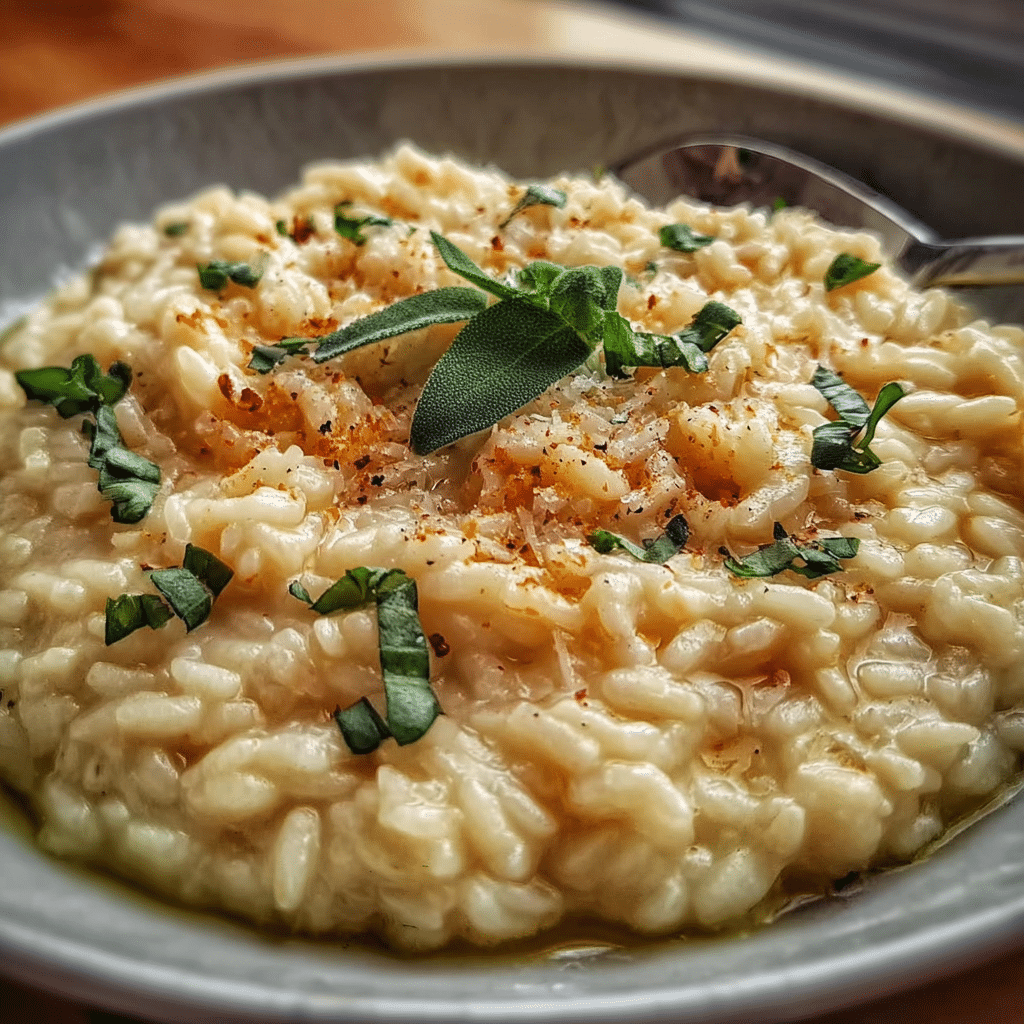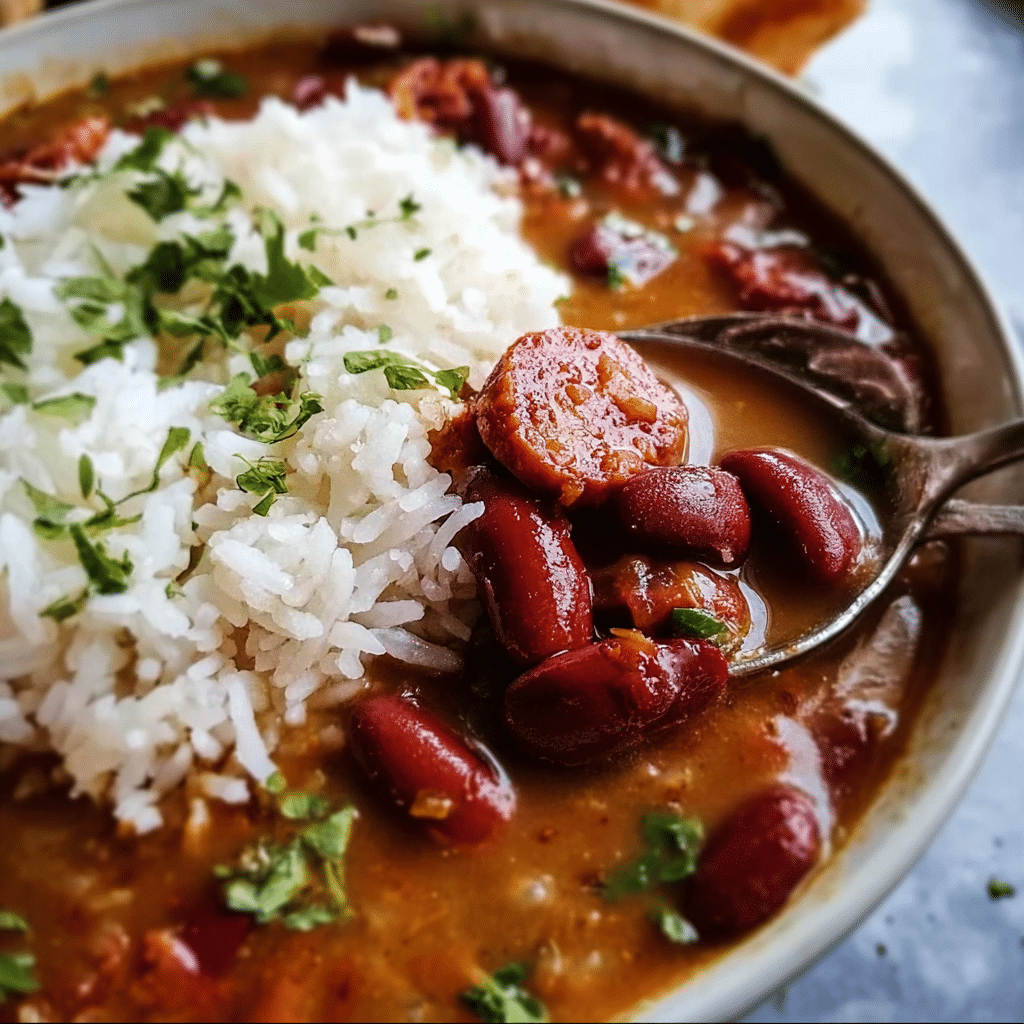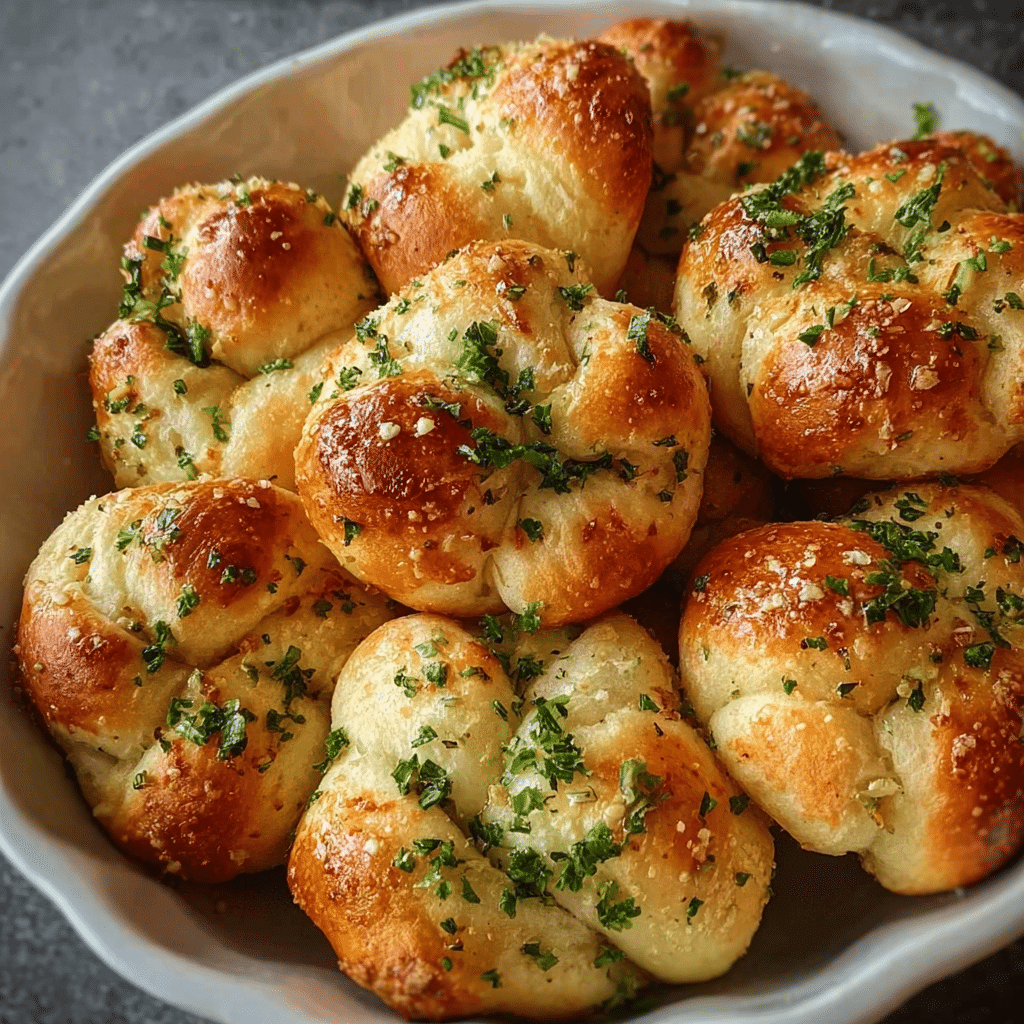Creamy queso rice has a way of bringing people together, filling not only our bellies but also our hearts with warmth and comfort. I remember the first time I stumbled upon this delightful dish at a family gathering. My cousin had whipped up a big batch, and as soon as I took my first bite, I was captivated by the velvety texture and the cheesy goodness that enveloped the fluffy rice. It was love at first taste! From that moment on, creamy queso rice became a staple in my household, especially during our busy weeknights when everyone seemed to be racing against the clock.
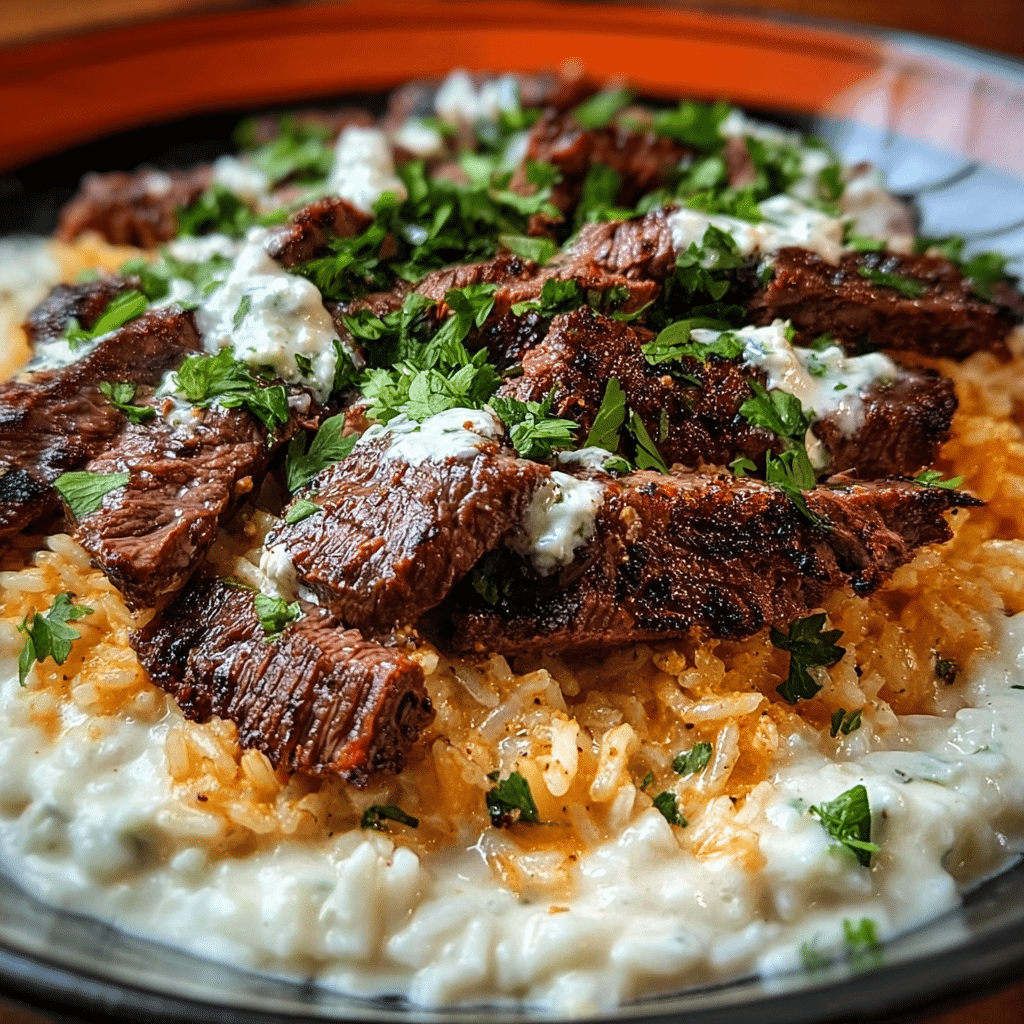
The beauty of creamy queso rice lies in its simplicity and versatility. It’s a dish that can be elevated for special occasions or kept casual for a weeknight dinner. I’ve often found myself experimenting with different ingredients, from spices to vegetables, making it a canvas for creativity. While I cherish the traditional recipe, I equally enjoy making it my own, adding personal touches that reflect my family’s tastes and preferences. This adaptability is what makes creamy queso rice stand out among other cheesy rice dishes—it can be anything you want it to be!
The Story Behind This Recipe
The origins of creamy queso rice can be traced back to the rich culinary traditions of Mexican and Tex-Mex cuisine, where cheese and rice are often paired together. The influences of Spanish settlers combined with indigenous ingredients created a unique fusion that has evolved over the centuries. While the traditional rice dishes focus on texture and flavor, creamy queso rice takes it a step further with the addition of rich, melty cheese that coats each grain in decadence.
During my childhood, I was fortunate enough to grow up in a household where food was the heart of our gatherings. My grandmother would often prepare her own version of cheesy rice, calling it “arroz con queso.” Each family member would eagerly await their turn to dig in, and I can still hear the laughter and chatter that filled the kitchen as we shared stories over steaming bowls. This emotional connection to the dish has only deepened as I’ve grown older, and now I find myself carrying on the tradition with my own family, creating new memories with every bite.
Why You’ll Love This Dish
Creamy queso rice is not just a meal; it’s a solution for busy families seeking quick dinner options without sacrificing flavor or quality. As a parent juggling work, school, and extracurricular activities, I often rely on this dish for its simplicity. In less than 30 minutes, I can whip up a hearty dinner that satisfies everyone at the table. All you need are a few staple ingredients—rice, cheese, and some spices—and you’re ready to go!
This dish shines during various seasons. In colder months, the warmth of creamy queso rice feels like a cozy hug, while in the summer, it pairs beautifully with grilled meats and fresh vegetables, making it a versatile choice for outdoor barbecues. I’ve even made it for potlucks, where it has consistently garnered rave reviews and requests for the recipe. You can easily customize the flavors to suit the season, adding roasted corn in the summer or jalapeños for a kick during the fall.
The emotional connection I have with creamy queso rice is undeniable. It reminds me of family gatherings, laughter, and the comfort of a home-cooked meal. The promise of what you’ll learn in this article is not just how to make this delicious dish, but how to infuse it with your own stories and traditions. Together, we’ll explore the recipe’s rich history, cultural significance, and even some tips to elevate your creamy queso rice experience!
The Rich History and Cultural Significance of creamy queso rice
The rich history and cultural significance of creamy queso rice are woven into the fabric of Mexican and Tex-Mex cuisines, where rice and cheese have long been celebrated for their comforting, satisfying qualities. The origins of this dish are deeply rooted in the agricultural practices of pre-Columbian civilizations, where native crops like maize and beans formed the basis of daily sustenance. The introduction of dairy products by Spanish colonizers transformed these traditional staples, paving the way for the creamy, cheesy concoctions we enjoy today.
Origins and History
Rice was brought to the Americas by European colonists, but it was quickly embraced and adapted by indigenous peoples. They combined it with local ingredients to create hearty meals. The concept of mixing rice with cheese likely emerged from the blending of Spanish and native cooking techniques. Early recipes for cheesy rice dishes can be found in various regions, with each area adding its own twist based on available resources. In Mexico, for example, the combination of rice and cheese became synonymous with comfort food, often served alongside carne asada or mole.
As creamy queso rice evolved, it absorbed influences from different regions and cultures. In Tex-Mex cuisine, the dish took on a life of its own, becoming a staple at family gatherings and potlucks. The creamy, cheesy element was enhanced by the use of processed cheese, which became widely available in the mid-20th century. This innovation made creamy queso rice not only more accessible but also a beloved comfort food across the United States. It’s fascinating to see how this dish has traveled over time, merging flavors and techniques from diverse culinary traditions.
Cultural Significance
Creamy queso rice holds a special place in many cultural celebrations and traditions. It’s often served during family gatherings, holidays, and potlucks, symbolizing togetherness and shared experiences. In Mexican households, you might find creamy queso rice accompanying festive dishes during celebrations such as Cinco de Mayo or Día de los Muertos. The dish serves not only as nourishment but also as a reminder of the joyous occasions spent with loved ones.
Throughout my culinary journey, I’ve noticed that creamy queso rice is also a go-to for comforting meals during life’s challenges. Whether it’s a long workweek or a rainy day, this dish has a way of lifting spirits and bringing warmth to our homes. It’s a reminder that food transcends mere sustenance; it connects us to our roots, our families, and our cherished memories.
Nutritional Benefits
While creamy queso rice is undoubtedly indulgent, it also carries nutritional benefits that shouldn’t be overlooked. The primary ingredient, rice, is a good source of carbohydrates, providing energy for our daily activities. When paired with cheese, you gain a boost of protein and calcium, essential for maintaining strong bones and overall health. Additionally, you can easily enhance the nutritional profile by incorporating vegetables or lean proteins into the dish.
For those who are health-conscious, the beauty of creamy queso rice lies in its flexibility. You can substitute traditional ingredients with healthier alternatives—like brown rice for added fiber or low-fat cheese to reduce calories—while still maintaining that beloved creamy texture. By making simple adjustments, you can enjoy this dish guilt-free, proving that comfort food can also be wholesome.
In conclusion, creamy queso rice is more than just a tasty meal; it embodies a rich history, cultural significance, and nutritional benefits that make it a beloved dish across generations. As we explore recipes and variations, let’s celebrate the connections it fosters and the memories it helps create. Join me as we dive deeper into the art of making creamy queso rice and discover all the delightful ways to enjoy this classic comfort food.
Essential Ingredients for Perfect creamy queso rice
When it comes to creating a dish that warms both the heart and the stomach, creamy queso rice with juicy steak strips stands out as an enticing option. The vibrant flavors and comforting textures of this dish make it a favorite in many households. Let’s dive into the essential ingredients that will help you craft this exquisite meal!
Essential Ingredients
- 2 cups Basmati Rice: Basmati rice is known for its long grains and aromatic flavor. It cooks up fluffy and light, making it a perfect base for our creamy queso rice. Choose high-quality, aged Basmati rice for the best results, as it will have a nutty flavor and a pleasant fragrance.
- 2 ½ cups Chicken Broth: Chicken broth adds depth and richness to our dish. Opt for low-sodium versions to control the salt levels in your meal. Homemade broth is the best option, but store-bought can work just fine if you’re short on time.
- 1 cube Chicken Bouillon: This ingredient enhances the flavor profile, infusing the rice with a savory taste. Look for organic or low-sodium varieties for a healthier choice.
- 1 can, about 14 oz Crushed Tomatoes: Crushed tomatoes provide acidity and sweetness, balancing the richness of the cheese. You can substitute diced tomatoes or tomato sauce if you prefer a smoother texture.
- 2 cloves Garlic, minced: Garlic brings a wonderful aroma and flavor that is essential in many cuisines. Fresh garlic is always preferred, but pre-minced garlic can save time.
- 1 small Onion, finely chopped (optional): Onions add sweetness and complexity. If you’re sensitive to onions, consider using shallots for a milder flavor.
- 1 teaspoon Paprika: This spice adds a subtle smokiness and vibrant color to the dish. You can choose between sweet or smoked paprika, depending on your preference.
- 1/2 teaspoon Cumin: Cumin offers an earthy flavor that complements the spices beautifully. Freshly ground cumin has a more potent flavor compared to pre-ground.
- Salt and pepper to taste: Essential for seasoning and enhancing the natural flavors of the ingredients. Always taste as you go to achieve the perfect balance.
- 2 tablespoons Olive Oil: Olive oil is great for sautéing and adds healthy fats. Choose extra virgin olive oil for its superior flavor and health benefits.
- 1 pound Sirloin Steak, cut into thin strips: Sirloin is tender and flavorful, making it an excellent choice for this dish. Look for well-marbled cuts to ensure juiciness.
- 2 tbsp Butter: Butter adds richness and enhances the overall creaminess of the dish. You can substitute with a plant-based butter if you’re looking for a dairy-free option.
- Montreal steak seasoning, to taste: This seasoning blend brings a zesty kick to the steak. You can make your own blend or purchase it pre-made.
- White Queso, for topping: The star of our creamy queso rice! Choose a high-quality white queso for a smooth, creamy finish. If you want to make your own, a blend of melted Monterey Jack and cream will work beautifully.
- Fresh Cilantro, for garnish: Cilantro adds a burst of freshness and color to the finished dish. If you’re not a fan of cilantro, consider using parsley instead.
- Flour tortillas, optional for serving: Serve your creamy queso rice with warm tortillas for a complete meal. You can also use corn tortillas for a gluten-free option.

Creamy Queso Rice with Juicy Steak Strips
Ingredients
- 2 cups Basmati Rice
- 2 ½ cups Chicken Broth
- 1 cube Chicken Bouillon
- 1 can, about 14 oz Crushed Tomatoes, you can used diced instead or tomato sauce instead
- 2 cloves Garlic, minced
- 1 small Onion, finely chopped (optional)
- 1 teaspoon Paprika
- 1/2 teaspoon Cumin
- Salt and pepper to taste
- 2 tablespoons Olive Oil
- 1 pound Sirloin Steak, cut into thin strips
- 2 tbsp Butter
- Montreal steak seasoning, to taste
- White Queso, for topping
- Fresh Cilantro, for garnish
- Flour tortillas, optional for serving
Instructions
-
Prep the Rice: Rinse the basmati rice under cold water until the water runs clear. This helps to remove excess starch and prevents the rice from becoming too sticky.
-
Sauté Garlic and Onion: In a large skillet or saucepan, heat the olive oil over medium heat. Add the minced garlic and chopped onion (if using). Sauté for 2-3 minutes or until the onion becomes translucent and the garlic is fragrant.
-
Toast the Rice: Add the rinsed basmati rice to the skillet. Stir continuously for about 2 minutes to lightly toast the rice, allowing it to absorb the flavors of garlic and onion.
-
Add Liquids and Seasonings: Pour in the crushed tomatoes and chicken broth. Crumble the chicken bouillon cube into the mixture. Add paprika, cumin, salt, and pepper. Stir everything together.
-
Cook the Rice: Bring the mixture to a boil, then reduce the heat to low. Cover the skillet with a lid and let it simmer for about 18-20 minutes, or until the rice is tender and the liquid is absorbed.
-
Rest and Fluff: Once the rice is cooked, remove the skillet from heat. Let it sit covered for 5 minutes. This allows the rice to settle and become fluffy.
-
Prep Steak: While the rice is cooking, season the sirloin steak strips generously on both sides with Montreal steak seasoning.
-
Cook Steak: Heat 1 tbsp of olive oil and butter in a separate skillet over medium-high heat. Once the skillet is hot, add the seasoned steak. Cook for about 4-5 minutes on each side for medium-rare, or until it’s done to your liking.
-
Add Steak to Pan: Fluff the cooked rice and add the cooked steak over top of the rice and generously drizzle with white queso.
-
Garnish and Serve: Garnish with fresh cilantro. Serve with warm flour tortillas on the side if desired.
Shopping Tips
When shopping for ingredients, freshness is key. For produce like garlic, onions, and cilantro, look for firm, unblemished items. Check the expiration dates on canned goods, especially the crushed tomatoes, to ensure you’re getting the best flavor. For the steak, choose cuts that are bright red with a good amount of marbling, as this indicates tenderness and flavor.
For quality chicken broth, consider brands that are organic and free of artificial additives. If you have time, making your own broth can elevate the dish significantly, allowing you to control the flavors and quality of the ingredients.
Substitutions and Alternatives
Dietary restrictions are common, and it’s important to know how to adjust your ingredients accordingly. If you’re looking for a gluten-free option, ensure that your chicken broth and any seasonings you use are certified gluten-free. For vegans, you can easily substitute the chicken broth with vegetable broth and replace the steak with marinated tofu or portobello mushrooms for a hearty alternative.
For those who are lactose intolerant, consider using a dairy-free cheese alternative or a homemade cashew cream in place of white queso. Always remember to check labels for hidden ingredients that may not align with your dietary needs.
Finally, when it comes to cost-saving tips, buying ingredients in bulk can save money in the long run. Items like rice, spices, and canned goods are often cheaper when purchased in larger quantities. Additionally, shopping at local farmers’ markets can yield fresher produce at a lower price than grocery stores.
With these ingredients and tips in mind, you’re already on your way to making a delicious plate of creamy queso rice with juicy steak strips that will leave your family and friends raving about your culinary skills!
Detailed Step-by-Step creamy queso rice Cooking Instructions
Now that we’ve gathered all the essential ingredients for our creamy queso rice with juicy steak strips, it’s time to roll up our sleeves and get cooking! This dish may sound fancy, but with the right approach and a bit of patience, you’ll discover that it’s quite manageable. Let’s break down the cooking process into clear steps to ensure success.
Preparation Steps
- Mise en Place: Begin by prepping all your ingredients. This means washing and chopping the onions and cilantro, mincing the garlic, and cutting the sirloin steak into thin strips. Having everything ready will make the cooking process smoother and more enjoyable.
- Soak the Rice (optional): If you have time, soak the Basmati rice in cold water for about 30 minutes. This helps achieve that fluffy texture we love. After soaking, drain the rice and set it aside.
- Measure the Broth: Pour 2 ½ cups of chicken broth into a measuring cup. If you’re using a bouillon cube, dissolve it in the broth at this stage, ensuring it’s well mixed.
- Season the Steak: In a bowl, toss the sirloin strips with Montreal steak seasoning. Let the meat marinate for at least 15 minutes to absorb the flavors.
Cooking Process
- Heat the Olive Oil: In a large skillet or pot over medium heat, add 2 tablespoons of olive oil. Allow it to heat up until shimmering but not smoking.
- Sauté Aromatics: Add the chopped onions (if using) and minced garlic to the pan. Sauté for about 2-3 minutes until the onions become translucent and the garlic is fragrant. Be careful not to burn the garlic, as it can turn bitter.
- Add the Rice: Stir in the Basmati rice, ensuring each grain is coated with the oil. This step is crucial, as it helps toasting the rice slightly, enhancing its flavor.
- Incorporate Tomatoes and Broth: Pour in the crushed tomatoes and the chicken broth. Bring the mixture to a gentle boil. Add the paprika, cumin, and season with salt and pepper to taste. Stir well to combine all the flavors.
- Simmer the Rice: Once boiling, reduce the heat to low, cover the pot, and allow it to simmer for about 15-20 minutes. Avoid lifting the lid too often, as this releases steam and can affect the cooking process. The rice is done when it has absorbed all the liquid and is tender.
- Cook the Steak: While the rice is cooking, heat another skillet over medium-high heat and add 2 tablespoons of butter. Once melted, add the seasoned steak strips in a single layer. Cook for about 2-3 minutes on each side until they are browned and cooked to your liking. Avoid overcrowding the pan, as this can steam the meat rather than sear it.
- Combine Ingredients: Once the rice is cooked, fluff it with a fork and gently fold in the cooked steak strips. This allows the flavors to meld beautifully.
Final Assembly
- Top with Queso: Serve the creamy queso rice in bowls or on plates. Drizzle generously with white queso, allowing it to melt slightly into the hot rice.
- Garnish: Sprinkle freshly chopped cilantro over the top for a burst of freshness. This not only adds flavor but also elevates the presentation.
- Serve Warm: If desired, serve with warm flour tortillas on the side for scooping or wrapping. This adds a wonderful texture and makes the meal even more enjoyable.
- Enjoy: Dig in and savor each bite of your delicious creamy queso rice with juicy steak strips. The combination of flavors and textures is sure to impress your family and friends!
Remember, the key to a successful creamy queso rice is patience. Take your time with each step, and don’t rush the process. Cooking should be an enjoyable experience, and with these detailed instructions, you’re well on your way to creating a dish that’s not only comforting but also full of flavor. Happy cooking!

Professional Tips and Techniques for creamy queso rice
When it comes to crafting the perfect creamy queso rice, a few professional tips and techniques can elevate this dish from good to absolutely unforgettable. As a food enthusiast who has spent countless hours in the kitchen trying to perfect this recipe, I’ve learned that the right approach can make all the difference. Let’s dive into some insider secrets that will help you create a creamy, cheesy, and utterly delightful plate of queso rice.
Professional Techniques
First and foremost, the key to achieving that rich, creamy texture in your queso rice lies in the type of cheese you use. While traditional recipes might call for cheddar, I highly recommend experimenting with a blend of cheeses. A combination of sharp cheddar for flavor, Monterey Jack for creaminess, and a touch of cream cheese can create a luscious mouthfeel that is hard to resist. When melting the cheese, be sure to do it over low heat. High temperatures can cause the cheese to become grainy rather than smooth.
Another essential technique involves the cooking of the rice itself. For a truly gourmet touch, consider using a short-grain rice like Arborio. This type of rice releases more starch, resulting in a creamier texture. Rinse the rice thoroughly before cooking to remove excess starch; this will prevent it from becoming gummy. Use a 1:1.5 ratio of rice to liquid, and consider incorporating some chicken or vegetable broth instead of water for added flavor.
Stirring is another crucial aspect of making creamy queso rice. Once you’ve combined the cooked rice and cheese mixture, stir continuously for a few minutes to ensure an even distribution of flavors. This is where you can add in your juicy steak strips, allowing the rice to soak up all those delicious juices.
Troubleshooting Guide
Even the best cooks encounter issues in the kitchen, so here are some common problems and solutions when it comes to creamy queso rice. If your rice turns out too dry, consider adding a splash of milk or broth to the mixture as you stir in the cheese. It’s always easier to add liquid than to fix a dish that’s too wet!
If your cheese sauce isn’t as creamy as you’d like, it could be due to the heat being too high during the melting process. Lower the heat and whisk in a bit of cream or milk, which can help bring it back to that desirable consistency. On the other hand, if your cheese turns out gritty, it’s likely that it was overheated. In this case, a splash of cream can help to smooth things out, although you might not achieve the same velvety texture as if it had melted correctly.
Presentation Tips
Presentation can truly elevate your creamy queso rice from a simple dish to a showstopper. Start by serving the rice in a wide, shallow bowl to showcase its creamy texture. Top it with your juicy steak strips and a drizzle of extra queso for that visually appealing contrast. Fresh herbs, like chopped cilantro or parsley, can add a pop of color and freshness. You might also consider garnishing with sliced jalapeños or a sprinkle of chili powder for an added kick.
When it comes to plating, consider the colors on the plate. The vibrant yellows and whites of the cheese against the rich brown of the steak create a beautiful contrast. Pair your dish with some colorful roasted vegetables or a fresh salad to bring even more life to the presentation.
As for wine and beverage pairings, creamy queso rice pairs well with a crisp white wine, such as a Sauvignon Blanc, which can cut through the richness of the dish. For those who prefer beer, a light lager or a refreshing pale ale can complement the flavors without overwhelming them. If you’re looking for a non-alcoholic option, consider serving a zesty lemonade or a sparkling water with lime.
By incorporating these professional tips and techniques, you’ll be well on your way to mastering creamy queso rice. Remember, cooking is as much about experimentation and enjoyment as it is about technique. Don’t be afraid to make it your own!
Creative Variations and Adaptations of creamy queso rice
Now that we’ve covered the fundamentals of creating the perfect creamy queso rice, let’s explore the many creative variations and adaptations that can keep this dish exciting and fresh. The beauty of creamy queso rice is its versatility; it can easily be tailored to fit different tastes, dietary needs, and even seasonal ingredients. Let’s take a closer look at how you can switch things up!
Seasonal Variations
Seasonal ingredients can breathe new life into your creamy queso rice. In the summer, consider adding fresh corn and diced tomatoes for a burst of sweetness and color. Grilled vegetables, such as zucchini and bell peppers, can also be a delightful addition, providing both flavor and texture. As fall approaches, think about incorporating roasted butternut squash or pumpkin puree into the mix. The sweetness of these vegetables pairs beautifully with the cheesy goodness of the rice.
In winter, you might want to add a hearty green, such as kale or spinach, which wilts down nicely and adds a pop of color while boosting the nutritional value. Come spring, fresh herbs like cilantro or basil can add brightness and freshness to the dish, making it feel light and vibrant.
Dietary Adaptations
For those with dietary restrictions, creamy queso rice can easily be modified to fit various dietary needs. If you’re following a keto diet, simply replace the rice with cauliflower rice for a low-carb alternative. This swap not only maintains the creamy texture but also allows you to enjoy all the flavors without the carbs.
For vegan adaptations, substitute the cheeses with plant-based alternatives. Nutritional yeast can provide a cheesy flavor along with a sprinkle of cashew cream for creaminess. You can also use coconut milk or almond milk to achieve the necessary richness without dairy. Don’t forget to load it up with veggies to ensure a satisfying meal.
Gluten-free eaters can rest assured that this dish is naturally gluten-free, especially if you’re using plain rice. Just be cautious with any store-bought sauces or seasoning mixes to ensure they also meet gluten-free standards.
Creative Twists
Let’s talk about the fun and creative twists you can apply to make creamy queso rice uniquely yours! One idea is to infuse the rice with spices commonly found in other cuisines. For example, you could add curry powder and peas for an Indian-inspired version or use taco seasoning for a Tex-Mex flair. The addition of black beans, diced avocados, and a squeeze of lime can create a zesty, southwestern experience.
Different cooking methods can also lead to delicious variations. Instead of cooking the rice on the stovetop, try baking it in the oven. Combine all the ingredients in a baking dish, cover it with foil, and let it bake until the rice absorbs the flavors and the cheese is melted and bubbly. Alternatively, using a slow cooker can also yield fantastic results, allowing all the flavors to meld together beautifully.
And let’s not forget about leftovers! If you find yourself with extra creamy queso rice, consider transforming it into stuffed peppers or quesadillas. You can even mix it into a breakfast scramble with eggs and your favorite breakfast meats for a hearty morning meal.
In conclusion, creamy queso rice is a dish that invites creativity and adaptation. With the right approach, it can be tailored to suit any palate or dietary need, making it a beloved staple in your culinary repertoire. So gather your ingredients and prepare to explore all the exciting variations this dish has to offer!
Storage, Reheating, and Meal Prep for creamy queso rice
When it comes to delicious meals, few dishes can rival the comforting allure of creamy queso rice with juicy steak strips. Whether you’re whipping it up for a weeknight dinner or serving it at a gathering, knowing how to properly store, reheat, and meal prep this dish is essential for maximizing flavor and freshness. As someone who adores cooking, I can tell you that a well-stored meal can turn hectic weeknights into easy breezy dinner times. Let’s dive into the nitty-gritty of storage, reheating, and meal prep strategies for our beloved creamy queso rice.
Short-term Storage
Once you’ve prepared your creamy queso rice, you might be wondering how to store it properly for short-term use. If you plan to enjoy it within a few days, the refrigerator is your best bet. First and foremost, allow the dish to cool to room temperature before transferring it to a container. This prevents condensation, which can lead to soggy rice.
For refrigerator storage, I recommend using airtight containers. Glass containers are my personal favorite because they don’t retain odors, are microwave-safe, and are easy to clean. If you’re using plastic, make sure it’s BPA-free and designed for food storage. Portioning your creamy queso rice into smaller containers can also make it easier to grab and go during busy weekdays. Label each container with the date it was made to keep track of freshness.
In general, your creamy queso rice should be good in the fridge for about 3 to 5 days. If you’re like me and prefer to enjoy meals at their peak freshness, aim to consume it sooner rather than later. Remember, if you notice any off smells or changes in texture, it’s better to err on the side of caution and throw it out.
Freezing and Long-term Storage
If you’ve made a large batch of creamy queso rice and want to save some for later, freezing is a fantastic option. Freezing not only preserves the flavors but also allows you to enjoy this comforting dish at a later date when you might not have time to cook. To freeze, follow the same cooling process as before. Once cooled, portion the rice into freezer-safe bags or containers. I find that using resealable freezer bags is particularly convenient. Squeeze out as much air as possible to prevent freezer burn, which can compromise the quality of your creamy queso rice.
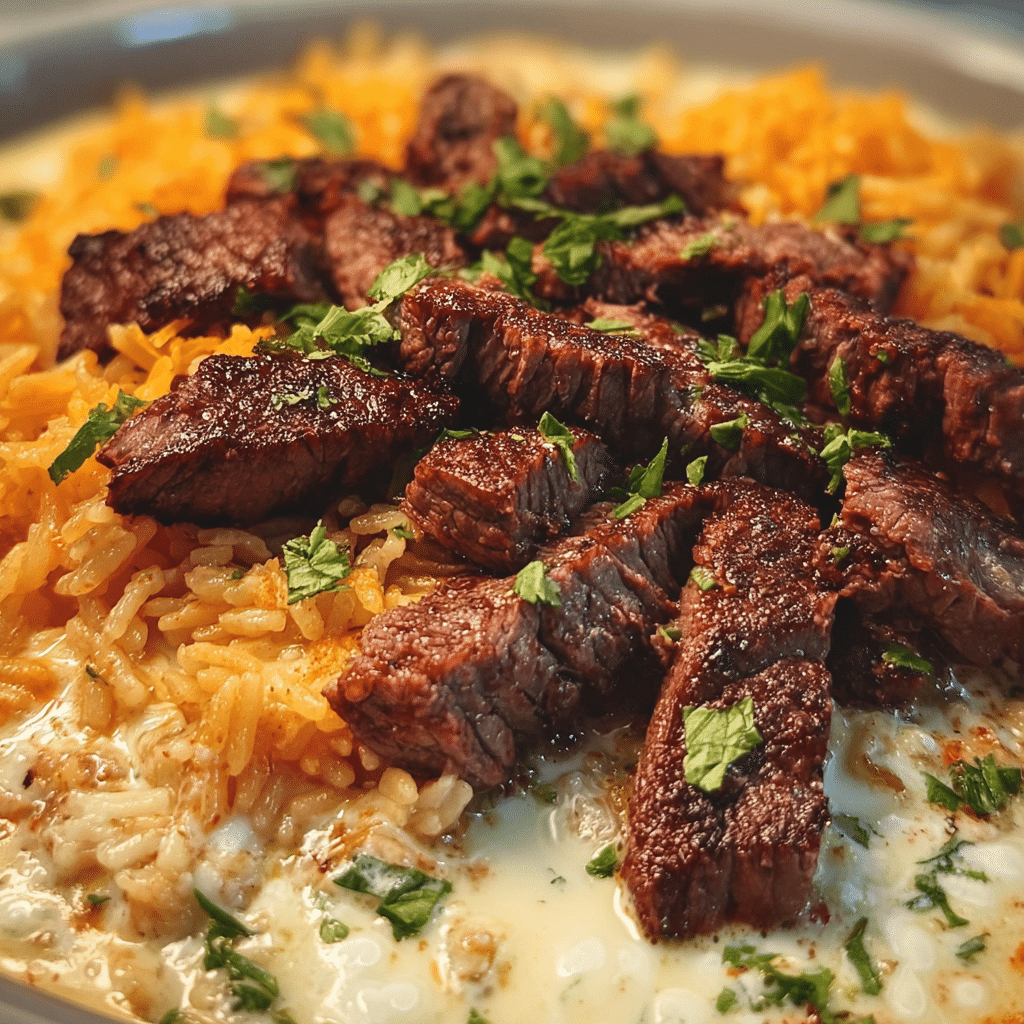
When it comes to freezing, make sure to label each bag or container with the date and contents. Creamy queso rice can be stored in the freezer for about 2 to 3 months. While it may still be safe to eat beyond that time frame, the texture and flavor may not be as enjoyable.
When you’re ready to enjoy your frozen creamy queso rice, transfer it to the fridge to thaw overnight. If you’re in a hurry, you can also defrost it in the microwave. Just be mindful of doing it in short intervals to avoid cooking the rice. After thawing, it’s best to reheat the rice promptly to maintain its quality.
Reheating Best Practices
Reheating creamy queso rice can sometimes be tricky, as you want to preserve its creamy texture without turning it into a mushy mess. One of my favorite methods is to reheat it on the stovetop. Just add a splash of water or broth to the pan to help revive the rice’s creaminess while preventing it from drying out. Heat it over low to medium heat, stirring occasionally until it’s warmed through.
If you prefer to use the microwave, make sure to place your creamy queso rice in a microwave-safe bowl and cover it with a damp paper towel. This will help retain moisture as it heats. Heat it in short bursts, stirring in between to ensure even heating. Remember, you may need to add a little extra cheese or cream to bring back that luscious texture!
For meal prep enthusiasts, creamy queso rice is an excellent candidate for batch cooking. You can make a large quantity at once and portion it out for lunches or quick dinners throughout the week. Pair it with grilled chicken, veggies, or other proteins to create a well-rounded meal. Just remember to follow the storage and reheating guidelines to keep everything fresh and delicious.
Lastly, always keep food safety in mind. If your creamy queso rice has been sitting out at room temperature for more than two hours, it’s best to discard it to avoid any foodborne illnesses. By following these storage and reheating tips, you’ll ensure that your creamy queso rice remains a delightful dish to savor, whether you’re enjoying it fresh or as a meal prep staple.
Nutritional Benefits and Health Information
As we dive into the creamy, cheesy world of creamy queso rice with juicy steak strips, it’s essential to consider not just the delectable flavors but also the nutritional benefits it brings to the table. Understanding the health aspects of your favorite recipes can enhance your enjoyment and help you make informed choices. Let’s break down the nutrition, health benefits, and dietary considerations of this scrumptious dish.
Nutritional Profile
When preparing creamy queso rice, the primary ingredients typically include rice, cheese (often cheddar or a queso blend), cream, steak, and various spices. The nutritional breakdown of a standard serving of creamy queso rice can vary based on the specific ingredients and quantities used, but generally, you can expect to find a hearty dose of carbohydrates, protein, and fats.
For a standard serving of creamy queso rice (approximately 1 cup), you are looking at an estimated nutritional profile of:
- Calories: 400-600, depending on portion size and ingredients
- Protein: 20-30 grams, primarily from the steak and cheese
- Carbohydrates: 45-60 grams, mostly from the rice
- Fats: 15-25 grams, depending on the amount of cheese and cream used
This dish is rich in calories, making it a satisfying option for those needing a hearty meal, especially after a long day. However, balance is key, and understanding how this dish fits into your daily nutritional goals is essential.
Health Benefits
The ingredients in creamy queso rice can offer several health benefits, particularly when prepared with fresh, whole ingredients. For instance, rice is a great source of carbohydrates, providing energy for your daily activities. Choosing whole grain rice, such as brown rice, can further enhance the dish’s nutritional value by adding fiber, which aids in digestion and promotes a feeling of fullness.
The cheese adds not only a creamy texture but also important nutrients like calcium and protein, which are essential for bone health and muscle repair. The steak strips contribute to the protein content, making this dish a filling option that can help sustain energy levels throughout the day.
Incorporating vegetables into your creamy queso rice can elevate its nutritional profile even further. For example, adding bell peppers, spinach, or corn can provide essential vitamins and minerals, making the dish more colorful and nutritious. This aligns with a balanced diet and allows you to enjoy creamy queso rice without compromising your health goals.
Dietary Considerations
When it comes to dietary considerations, creamy queso rice can be quite versatile, but it’s important to be mindful of allergens and specific dietary needs. For those who are lactose intolerant or allergic to dairy, you can easily modify the recipe by using dairy-free cheese alternatives and coconut or almond milk instead of cream.
For individuals following a gluten-free diet, using gluten-free rice and ensuring that all seasonings and additional ingredients are gluten-free is crucial. Additionally, if you’re looking to reduce calories or fat intake, consider using lean cuts of steak or substituting some of the cheese with nutritional yeast, which provides a cheesy flavor without the added fat.
In terms of calorie content, creamy queso rice can be higher than other simple rice dishes. However, its richness can be balanced out by serving smaller portions alongside a salad or steamed vegetables, creating a more well-rounded meal.
In conclusion, while creamy queso rice with juicy steak strips is undeniably indulgent, it can also be part of a balanced diet when prepared thoughtfully. By being aware of its nutritional profile, health benefits, and dietary considerations, you can enjoy this creamy comfort food while still aligning it with your health goals. After all, food is meant to be enjoyed, and with the right approach, you can savor every bite of creamy queso rice without any guilt!
Frequently Asked Questions About Creamy Queso Rice
How can I make easy creamy queso rice with juicy steak strips?
To create an easy creamy queso rice dish with juicy steak strips, start by cooking your rice according to package instructions. While the rice is cooking, season and sear your steak strips in a hot skillet until they are browned and cooked to your desired doneness. In a separate pot, prepare a creamy queso sauce by melting cheese with milk and stirring in spices like cumin and chili powder for added flavor. Once everything is ready, combine the cooked rice with the queso sauce and top with the steak strips for a deliciously satisfying meal. For an extra kick, consider adding diced jalapeños or a sprinkle of fresh cilantro as a garnish.
What is the recipe for creamy queso rice with juicy steak strips?
To make creamy queso rice with juicy steak strips, begin by cooking 1 cup of rice in a saucepan with 2 cups of water until fluffy. Meanwhile, marinate your steak strips in a mixture of olive oil, garlic powder, salt, and pepper for at least 15 minutes. Sear the steak in a hot skillet until cooked to your preference, then set aside. For the queso, melt 1 cup of cheese (like Velveeta or cheddar) with 1 cup of milk, stirring until smooth, and add spices such as paprika and cayenne for flavor. Finally, mix the cooked rice with the queso, then top with your juicy steak strips and serve with optional toppings like avocado or green onions.
Conclusion: Mastering the Perfect creamy queso rice
Creating the perfect creamy queso rice is more than just following a recipe—it’s about understanding the techniques, ingredients, and cultural significance behind this beloved dish. Throughout this comprehensive guide, we’ve explored everything from the historical origins to modern variations, ensuring you have all the knowledge needed to make this recipe your own.
Whether you’re a beginner cook or an experienced chef, the techniques and tips we’ve shared will help you create a creamy queso rice that’s not only delicious but also meaningful. Remember that cooking is a journey of discovery, and each time you make this dish, you’ll learn something new.
We encourage you to experiment with the variations we’ve discussed, adapt the recipe to your dietary needs, and most importantly, share it with the people you love. Food has the incredible power to bring people together, and Creamy Queso Rice with Juicy Steak Strips is the perfect dish to create lasting memories around your dinner table.


